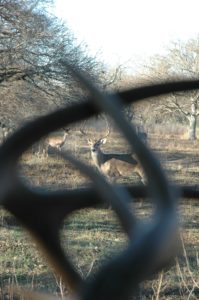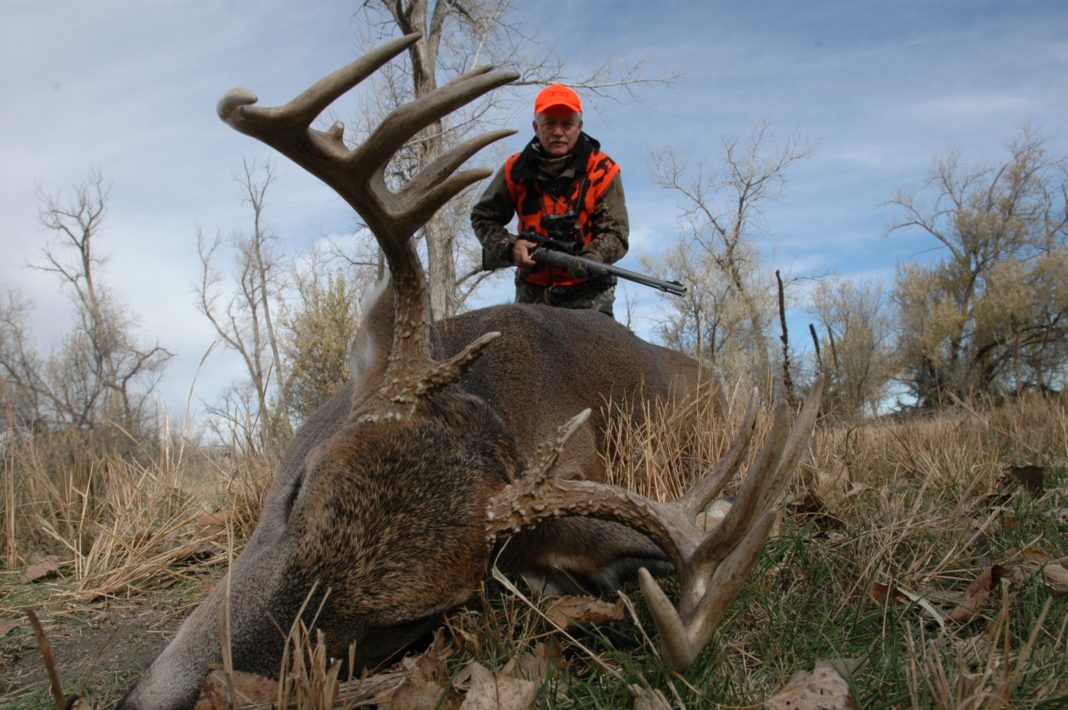Deer calls can make or break a hunt. Last fall I was grunting and heard a cascade of crunching leaves that seemed to be getting louder. Through a tiny window between branches I caught a glimpse of a huge buck coming right for my stand. Suddenly, the animal stopped and began walking away. Half an hour earlier, I’d killed a doe and the buck crossed the blood trail and spooked.
Get Aggressive
 As the buck walked away I grunted, yet it ignored the sound completely. Luckily, I had a set of rattling horns and banged them wildly, causing the buck to stop. Rattling the antlers again brought the deer closer by a few steps. I rattled again, laid the antlers aside, and chose to wait for the deer to make the next move.
As the buck walked away I grunted, yet it ignored the sound completely. Luckily, I had a set of rattling horns and banged them wildly, causing the buck to stop. Rattling the antlers again brought the deer closer by a few steps. I rattled again, laid the antlers aside, and chose to wait for the deer to make the next move.
After a few minutes, it approached a few more steps, searching and sensing. Five minutes later it came a bit closer. The ultra-cautious deer took 20 minutes to cover 75 yards causing my mental condition to totally melt down.
I knew the buck was 42 yards, but used the 32 yard markings in my crossbow scope resulting in a shaft that zipped just under its chest. This was easily a record book buck and it was fooled by grunting and rattling. Despite 50 years of deer hunting, buck fever got the best of me.
Do No Harm
I once used doe-in-heat scent on an early season deer hunt. As a mature doe approached the scent site, it snorted and ran. Clearly the scent at the wrong time of the year hurt rather than helped. When used properly, most deer calls won’t hurt you. A deer may not respond, yet it will not be chased away. Grunting occurs throughout the year, making it one of the safest of calls.
Try These Three
Bernie Barringer gives his “top 3” calls to use when deer hunting in the Bucks, Bulls, and Bears website. Master these calls and you will easily increase your hunting success:









![The Best Deer Camp Chili [VIDEO] Deer Chili Ingredients, Tomatoes, Chili Spices](/wp-content/uploads/2015/10/Deer-Chili-Deer-Camp-Recipe-218x150.jpg)








![How to Call Elk Early in the Season [VIDEO]](/wp-content/uploads/2016/08/byers003-218x150.jpg)




![Idiots Disturb Hunter: How Would You Have Handled It? [VIDEO]](/wp-content/uploads/2015/10/DSC00110-e1474487693878-100x70.jpg)
![Albino Buck Shocked to Shed His Antlers [VIDEO]](/wp-content/uploads/2015/10/AlbinoDeer-100x70.jpg)